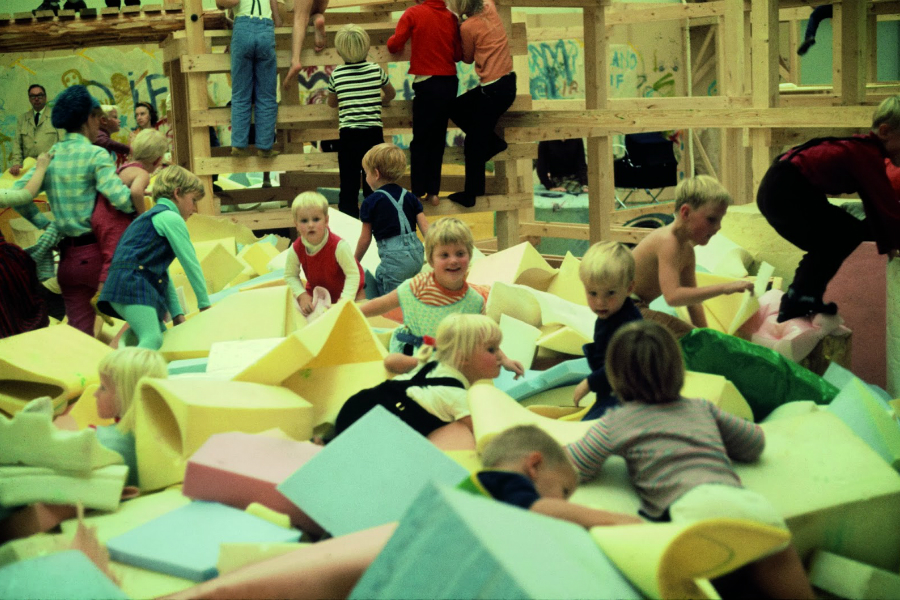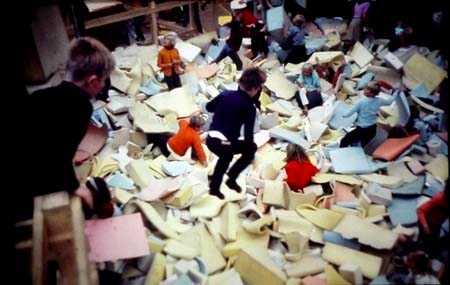Palle Nielsen: The Model

Curator Stephanie Straine introduces us to a unique 1960s intervention that continues to question authority, societal norms and the very definition of art…
Tate Liverpool’s ground floor gallery features an archival presentation of artist Palle Nielsen’s The Model – A Model for a Qualitative Society originally staged in Stockholm in 1968. It has been programmed in parallel with Art Turning Left because of its focus on artistic production, interaction and participation.
The Model was a utopian project, an attempt to create a new format for social interaction by transforming the large exhibition space in Stockholm’s Moderna Museet into a free adventure playground for children. Over the course of three weeks in October 1968 more than 20,000 children made use of the jungle gyms, climbing ropes, water chute, foam rubber ‘diving pool’, theatrical costumes, carnival masks, records and turntables, swings, and many other elements that comprised the playground.
In allowing children to take over a museum space in its entirety, what emerged was a form of collective anarchism that pushed to near breaking point the project’s entire framework. The type of unstructured play encouraged by The Model had the potential for complete and utter self-destruction; a trajectory Nielsen was more than happy to let unfold. It became in essence a sensory and amorphous environment in which the children had total autonomy.

As a journalist wrote, Nielsen ‘has given children a break from the pressure of being children, and that is enough.’ Nielsen and his team of volunteers also built an outdoors playground, so that the many children queuing to enter The Model would not get bored.
Tate Liverpool’s decision to present an archival display of this project – one of the most ambitious, experimental, yet still relatively unknown episodes in the history of radical artistic practice – rests on a desire to explore the creative and learning potential of failure. In 1968 The Model captured Stockholm’s public imagination by embodying a kind of straightforward positivity and idealism, but there was also an inbuilt element of failure, in that the ambition to construct a new model for society through an experiment in play could never be fully achieved.
The gallery space was continuously filmed and photographed from many different angles: so much so that some people noted it felt as if the children were ‘guinea pigs.’ This almost oppressive surveillance undermined the utopian sensation of freedom in The Model, emphasising the contradictions inherent in its attempt to produce openness and emancipation.
The archival exhibition at Tate Liverpool includes documentation of The Model that encompasses slide projections, architectural plans, photographs, TV recordings, records that were made available to the children, paper ephemera and press coverage of the event, and many other archival traces of this fleeting juxtaposition of untrammelled play and the ideological limits of the white cube.
Stephanie Straine, Assistant Curator, Tate Liverpool
This article was taken from a publication produced by Tate Liverpool. For more information about the gallery and its exhibitions go to www.tate.org.uk/liverpool
Palle Nielsen The Model is on exhibition at Tate Liverpool until 2 February 2014. Free entry





